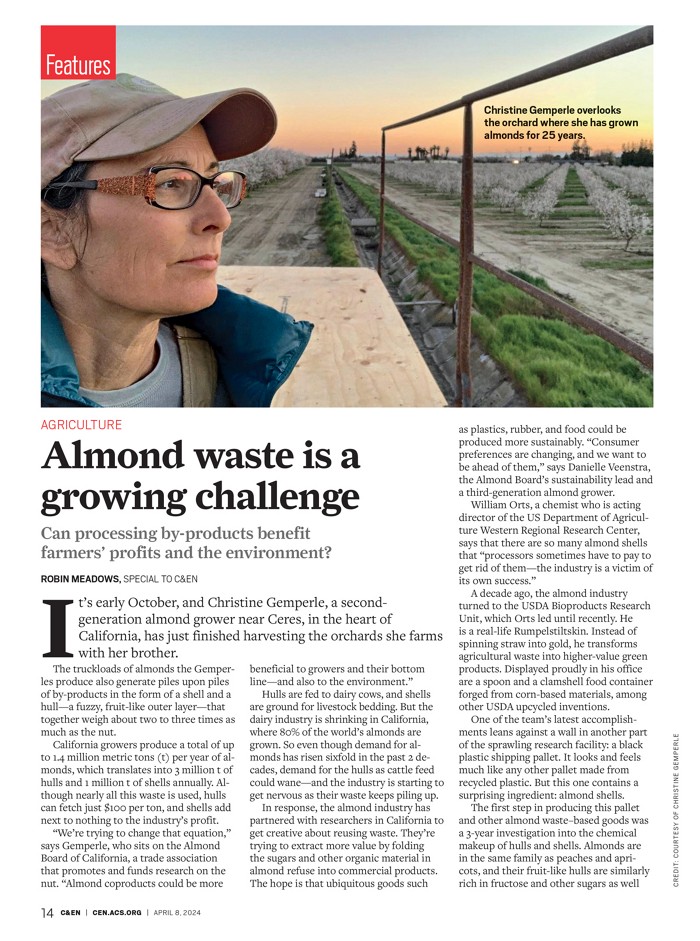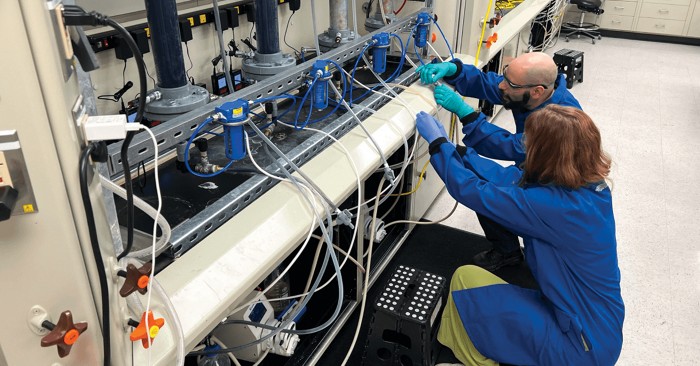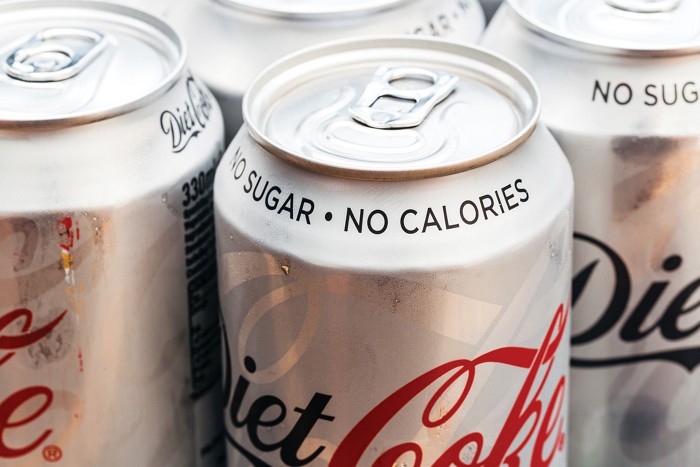Advertisement
Grab your lab coat. Let's get started
Welcome!
Welcome!
Create an account below to get 6 C&EN articles per month, receive newsletters and more - all free.
It seems this is your first time logging in online. Please enter the following information to continue.
As an ACS member you automatically get access to this site. All we need is few more details to create your reading experience.
Not you? Sign in with a different account.
Not you? Sign in with a different account.
ERROR 1
ERROR 1
ERROR 2
ERROR 2
ERROR 2
ERROR 2
ERROR 2
Password and Confirm password must match.
If you have an ACS member number, please enter it here so we can link this account to your membership. (optional)
ERROR 2
ACS values your privacy. By submitting your information, you are gaining access to C&EN and subscribing to our weekly newsletter. We use the information you provide to make your reading experience better, and we will never sell your data to third party members.
Food
Newscripts
Chemist experiments on Bake Off, and the possible chemical cause of red wine headaches
by Priyanka Runwal
January 19, 2024
| A version of this story appeared in
Volume 102, Issue 2

Bringing chemistry nerdiness to TV baking
Back in October, Newscripts wrote about chemist and baker Josh Smalley, who was a contestant in the most recent season of the televised baking competition The Great British Bake Off (known in short as Bake Off and as The Great British Baking Show in the US). After the finale aired this past November, Smalley was finally able to speak to the media—including Newscripts—about his adventures in the show’s famous tent.
A chemical biology researcher at the University of Leicester, Smalley brought precision and a willingness to experiment to the show. “As a scientist, I wanted to be very prepared, very organized, very methodical in my approach,” he tells Newscripts. “And the chemistry background helped a lot.”

He achieved several accolades during the season and even secured the coveted Hollywood handshake from judge Paul Hollywood, who has a reputation as a tough critic. Although Smalley finished the competition as a runner-up, his bakes continue to be celebrated for their attention to detail and themes inspired by his love for science, gardening, and Christmas.
During the week of the competition devoted to creations with chocolate, for example, Smalley created a “Chemistry Centenary” chocolate box cake. He decorated the box by piping chemical structures of baking ingredients such as sodium bicarbonate, also known as baking soda; vanillin, the main flavor component of vanilla extract; butyric acid, which lends US chocolate its infamous sour taste; and theobromine, a chemical relative of caffeine that contributes to chocolate’s bitter taste.
Smalley chose this theme to mark the centennial of the University of Leicester’s chemistry department and presented the chocolate box on a glass stand made by the school’s glassblower. The stand included a rectangular piece of glass sitting on tiny conical flasks similar to those used in experiments. At the bottom, he placed a wooden panel adorned with stickers representing elements of the periodic table; Smalley had found these in his undergraduate laboratory. “It was a really strong connection with Leicester chemistry,” he says.
Smalley is now back to doing experiments in the lab, but he hopes to use his recognition from the show to become a science ambassador.
Researching red wine headaches

Apramita Devi prefers red over white wine. Fortunately for her, drinking a glass or two of red wine doesn’t result in headaches, as it does for many people.
Several theories point to the histamines or tannins present in grape skins as potential pain-inducing culprits. Others suggest that the sulfites used as preservatives in wine making may trigger headaches. But the evidence hasn’t been very clear, says Devi, a postdoctoral researcher at the University of California, Davis.
In a recent study, Devi and colleagues noted that quercetin, a flavonoid in grape skins found abundantly in red wines, may be relevant. They identified a form of quercetin called quercetin-3-glucuronide that is particularly effective at blocking aldehyde dehydrogenase 2 (ALDH2), an enzyme involved in alcohol metabolism (Sci. Rep. 2023, DOI: 10.1038/s41598-023-46203-y). ALDH2 deficiency can result in a toxic buildup of acetaldehyde in the body, causing headaches.
“It inhibited the enzyme to around 78%, which is a huge amount,” Devi tells Newscripts, cautioning that she conducted the tests using high quercetin concentrations. “Doing some back calculations, if a person drank a glass of wine, around 35% of the enzyme would be inhibited,” she says, enough to trigger a headache.
The researchers are testing this quercetin hypothesis in clinical trials. But why some people experience these red wine headaches and others don’t is still a mystery.
Please send comments and suggestions to newscripts@acs.org





Join the conversation
Contact the reporter
Submit a Letter to the Editor for publication
Engage with us on Twitter